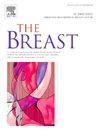Comparison of oncological outcomes of premenopausal with ovarian function suppression versus postmenopausal women in ER+/HER2- breast cancer
IF 5.7
2区 医学
Q1 OBSTETRICS & GYNECOLOGY
引用次数: 0
Abstract
Background
The Rx for positive node endocrine-responsive breast cancer trial highlighted that premenopausal (PRE) women who underwent chemotherapy exhibited superior survival rates compared to postmenopausal (POST) counterparts, but showed worse survival without chemotherapy. This raises the question whether application of ovarian function suppression (OFS) in PRE women aligns with their cancer biology, treatment response, and outcomes observed in POST women.
Methods
Data from the Seoul National University Hospital breast cancer cohort focusing on patients with stage pT1-3, pN0-1, estrogen receptor-positive (ER+), and HER2-negative breast cancer were analyzed. Survival outcomes, including invasive disease-free survival (iDFS) and distant relapse-free survival (DRFS), were compared between PRE women receiving OFS and POST women, with chemotherapy usage as a stratification factor. Propensity score matching was performed.
Result
We analyzed 3483 patients, comprising 2901 POST and 582 PRE women with OFS. In the cohort without chemotherapy, the 10-year iDFS rates were 90.3 % and 88.3 % (hazard ratio [HR], 1.32; p = 0.16), and 10-year DRFS rates were 94.3 % and 96.1 % (HR, 0.78; p = 0.41) for POST and PRE women with OFS, respectively. Among women treated with chemotherapy, 10-year iDFS rates were 83.0 % and 79.5 % (HR, 1.21; p = 0.37), and DRFS rates were 86.7 % and 85.7 % (HR, 1.14; p = 0.58) for POST and PRE women with OFS, respectively. These results remained consistent after PSM.
Conclusion
Oncological outcomes of PRE women receiving OFS were comparable to those of POST women with ER+ and HER2-early breast cancer, irrespective of chemotherapy administration.
绝经前卵巢功能抑制与绝经后ER+/HER2-乳腺癌患者的肿瘤预后比较
Rx阳性淋巴结内分泌反应性乳腺癌试验强调,绝经前(PRE)接受化疗的妇女比绝经后(POST)的妇女表现出更高的生存率,但未接受化疗的生存率更差。这就提出了一个问题,卵巢功能抑制(OFS)在绝经前妇女中的应用是否符合她们的癌症生物学、治疗反应和绝经后妇女观察到的结果。方法分析来自首尔国立大学医院乳腺癌队列的数据,该队列以pT1-3期、pN0-1期、雌激素受体阳性(ER+)和her2阴性乳腺癌患者为研究对象。生存结果,包括侵袭性无病生存期(iDFS)和远端无复发生存期(DRFS),比较接受OFS的PRE妇女和接受OFS的POST妇女,化疗使用作为分层因素。进行倾向评分匹配。结果我们分析了3483例女性OFS患者,其中POST 2901例,PRE 582例。在未接受化疗的队列中,10年iDFS率分别为90.3%和88.3%(风险比[HR], 1.32;p = 0.16), 10年DRFS率分别为94.3%和96.1% (HR, 0.78;p = 0.41)。在接受化疗的女性中,10年iDFS率分别为83.0%和79.5% (HR, 1.21;p = 0.37), DRFS率分别为86.7%和85.7% (HR, 1.14;p = 0.58)。这些结果在PSM后保持一致。结论不论化疗方案如何,接受OFS治疗的PRE妇女的肿瘤预后与ER+和her2早期乳腺癌的POST妇女相当。
本文章由计算机程序翻译,如有差异,请以英文原文为准。
求助全文
约1分钟内获得全文
求助全文
来源期刊

Breast
医学-妇产科学
CiteScore
8.70
自引率
2.60%
发文量
165
审稿时长
59 days
期刊介绍:
The Breast is an international, multidisciplinary journal for researchers and clinicians, which focuses on translational and clinical research for the advancement of breast cancer prevention, diagnosis and treatment of all stages.
 求助内容:
求助内容: 应助结果提醒方式:
应助结果提醒方式:


